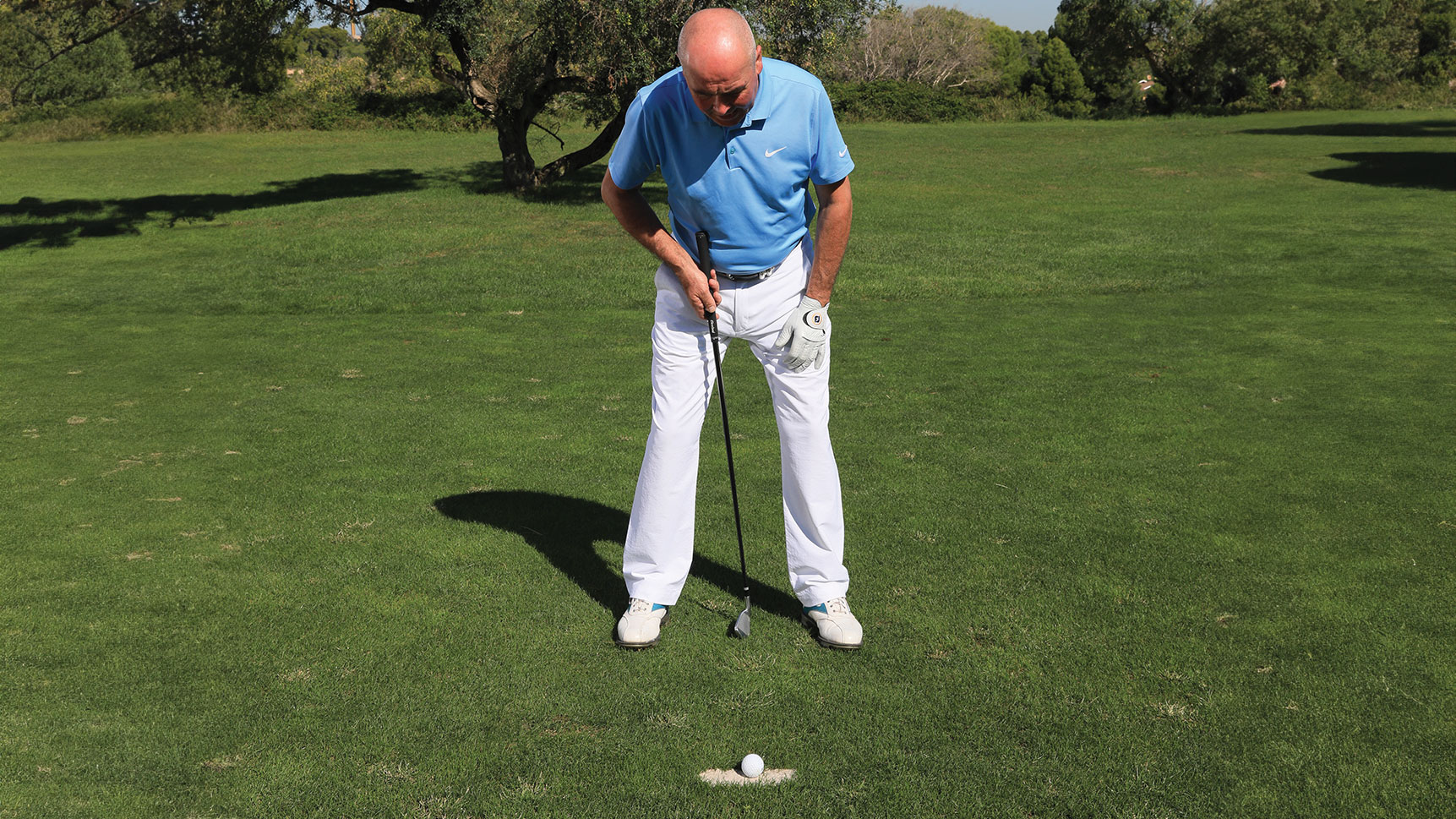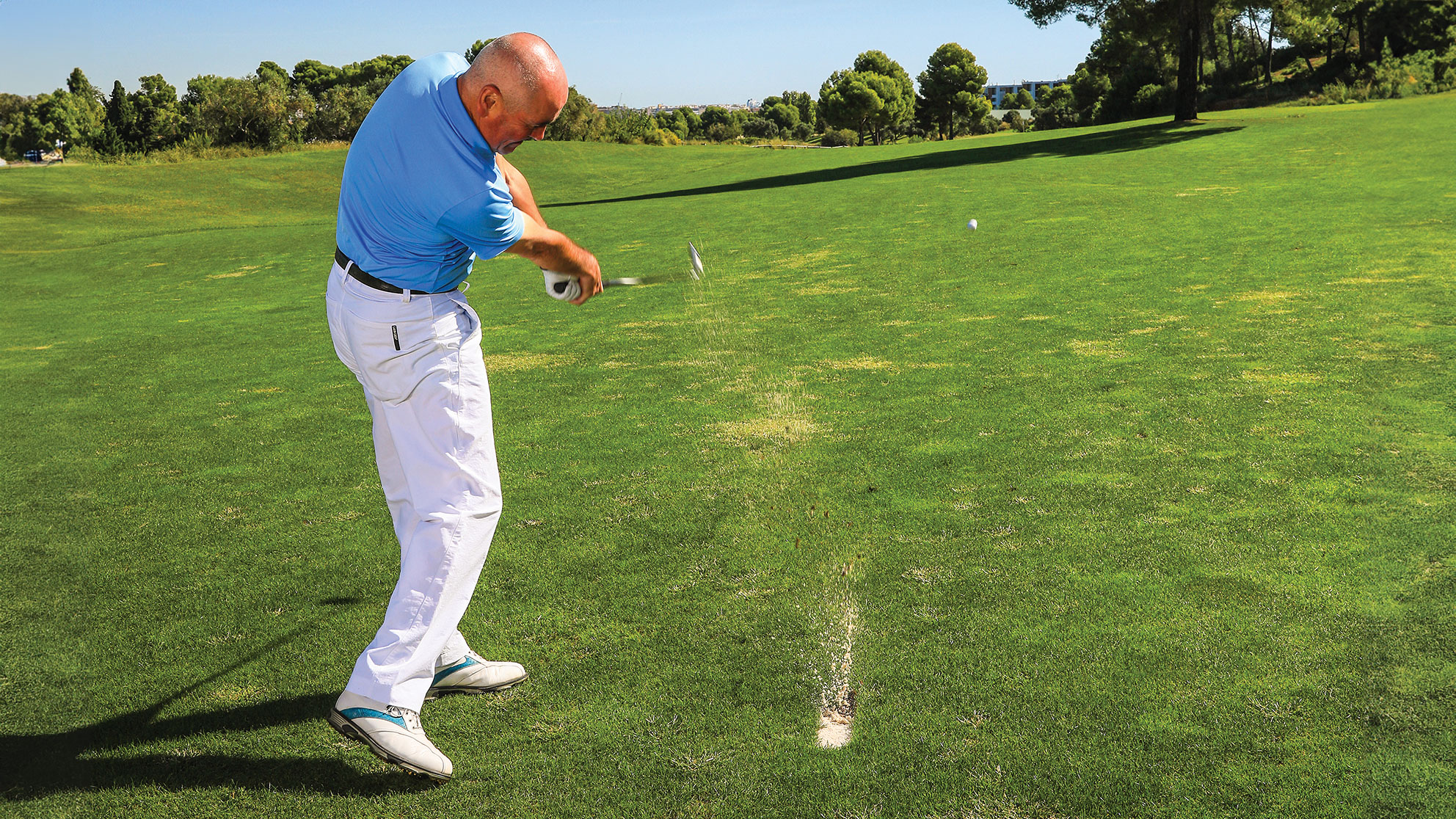Stop Moaning About Divots... This Is Not A Difficult Shot To Play
Ok, so it's not ideal, but it's not so hard to strike the ball cleanly from a divot, not when you know how...

Keith Williams

So, you've hit a perfect drive, straight down the middle of the fairway - it's a wonderful feeling. A few minutes later you arrive at your ball and discover that it's nestled down slightly into a divot. Not such a wonderful feeling.
We get it - it's frustrating. However, there's no point in cursing your luck. The argument as to whether golfers should get free relief from fairway divots continues to rumble on. You can either continue to moan about the Rule or concentrate on how to play the shot.
We suggest the latter, as does PGA professional Keith Williams. In this article, our expert offers his top golf tips on how to strike the ball from a divot. Really, it's not all that difficult and certainly not a shot we should fear as much as we do...
HOW DO YOU HIT OUT OF A DIVOT?

Keith is a former European Tour player and Wales international. He has coached Tour winners and international amateur teams. A former Head Coach at England Golf, Keith also led Ian Woosnam's academy at Celtic Manor before taking up a coaching position with the Czech Golf Federation.
You can’t play a round of golf without encountering a few good and bad breaks. As frustrating as coming to rest in a divot may be, especially after a perfect drive, it needn’t create a huge obstacle.
So, firstly, put that misfortune to the back of your mind. If you’re still wound up when you come to address the ball, you won’t be concentrating on the basics required to ensure you make a sweet connection.
The secret to making a good contact in this scenario is to hit down on the ball. With a few simple adjustments in the set-up, you can help promote a steeper backswing. By doing so, the downswing is also made steeper, which helps you to strike the ball first and then the ground. Fully commit to these tweaks and you’ll get that pure strike that sends the ball up and out towards your intended target.
1. Ball back
Subscribe to the Golf Monthly newsletter to stay up to date with all the latest tour news, equipment news, reviews, head-to-heads and buyer’s guides from our team of experienced experts.
You want to be driving down on the ball, so place the ball an inch or two further back in your stance than you normally would.

I have moved the ball position a couple of inches back in my stance
2. Hands forward
Your hands should be ahead of the ball at set-up and impact. Shift your weight so you feel a little pressure on your front foot.

Note how my hands are ahead of the golf ball at set-up
3. Extend the divot
Set-up adjustments made, you should end up 'trapping' the golf ball. Picture the divot increasing in size as you drive down on the ball.

Making those adjustments at set-up help me to 'trap' the ball
FAQS
What is a divot in golf?
The word “divot” comes from Scots and was used as far back as the 1500s to describe a piece of turf with the grass growing out of it. Divots were generally used as roofing material. In golf, the definition is similar - it's a strip of turf removed from the ground when playing a shot.
Do you get free relief from a divot in the rough when it's preferred lies?
The answer is no, unless the committee has decided to ignore the recommendation in The Rules.

Michael has been with Golf Monthly since 2008. A multimedia journalist, he has also worked for The Football Association, where he created content to support the England football team, The FA Cup, London 2012, and FA Women's Super League. As content editor at Foremost Golf, Michael worked closely with golf's biggest equipment manufacturers and has developed an in-depth knowledge of this side of the industry. He's a regular contributor, covering instruction, equipment, travel and feature content. Michael has interviewed many of the game's biggest stars, including seven World No.1s, and has attended and reported on numerous Major Championships and Ryder Cups around the world. He's a member of Formby Golf Club in Merseyside, UK.
- Keith WilliamsPGA Professional & Master Coach
You must confirm your public display name before commenting
Please logout and then login again, you will then be prompted to enter your display name.